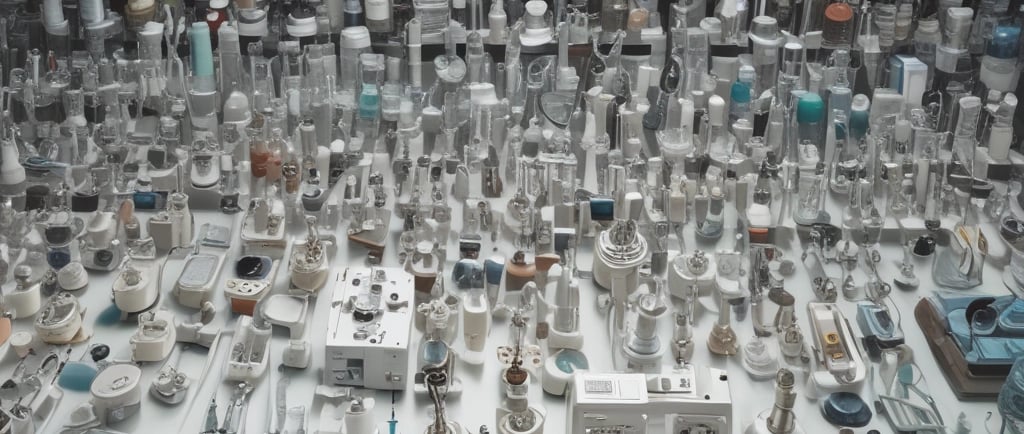Global Medical Equipment Sourcing: Pros & Cons
Explore the global medical device market valued at over $570 billion in 2023. Understand the pros and cons of sourcing medical equipment from various countries, balancing cost, quality, and supply chain resilience for healthcare institutions and policymakers.
4/10/20252 min read


Global Evaluation of Medical Equipment Source Countries: Pros, Cons, and Market Ranges
The global medical device market is valued at over $570 billion (2023), with sourcing spread across a wide range of countries that specialize in various types of equipment—from high-end imaging systems to affordable disposables. For healthcare institutions, policymakers, and procurement professionals, understanding the advantages and challenges of sourcing from different countries is vital to balancing cost, quality, and supply chain resilience. This blog provides an overview of the leading source countries for medical equipment, along with statistical insights and strategic pros and cons.
1. United States
Overview:
Largest exporter of high-end medical technologies, including diagnostic imaging, surgical robotics, and life-support systems.
Home to top brands like GE Healthcare, Medtronic, Boston Scientific, and Stryker.
Pros:
Premium quality and innovation
Strong regulatory compliance (FDA)
Long product lifespan and technical support
Cons:
Higher cost per unit
Longer lead times for international buyers
Price Range:
High-end imaging systems (e.g., MRI): $1M – $3M
Infusion pumps: $2,000 – $8,000
Market Share:
Over 40% of global Class III medical devices
2. Germany
Overview:
Known for engineering precision in surgical instruments, imaging systems, and anesthesia machines.
Major players: Siemens Healthineers, B. Braun, Dräger.
Pros:
Excellent manufacturing quality
Durable equipment
Strong R&D pipeline
Cons:
Higher price points
Limited customization options for low-resource settings
Price Range:
Anesthesia workstations: $30,000 – $75,000
Endoscopy systems: $15,000 – $50,000
Market Share:
Top 3 global exporter in high-precision medical devices
3. China
Overview:
Largest producer of low- to mid-range medical equipment and consumables.
Major manufacturers: Mindray, Edan Instruments, Lepu Medical, Yuwell.
Pros:
Cost-effective for basic and intermediate equipment
Rapid production cycles
Increasing R&D investment
Cons:
Variable quality across manufacturers
Concerns about regulatory consistency
Price Range:
Patient monitors: $800 – $3,000
Ultrasound devices: $5,000 – $20,000
Market Share:
Dominant in consumables and portable diagnostics for LMICs
4. India
Overview:
Rapidly growing player, especially in cost-sensitive segments (diagnostic kits, disposables, and basic devices).
Leading companies: Trivitron, BPL Medical, Poly Medicure.
Pros:
Competitive pricing
Regulatory improvements (CDSCO alignment with WHO GMP)
Strong domestic demand drives innovation
Cons:
Limited high-end equipment manufacturing
Variable after-sales support
Price Range:
ECG machines: $300 – $1,500
Oxygen concentrators: $500 – $1,200
Market Share:
Key supplier to Africa, Southeast Asia, and domestic Indian market
5. Japan
Overview:
Specializes in imaging, diagnostic sensors, and minimally invasive surgical tools.
Key players: Canon Medical, Olympus, Nihon Kohden.
Pros:
High quality and precision engineering
Quiet innovation in diagnostic and monitoring tools
Reliable service history
Cons:
Limited product localization for Western markets
Higher procurement costs
Price Range:
EEG machines: $5,000 – $12,000
Endoscopic tools: $10,000 – $30,000
Market Share:
Global leader in endoscopy and diagnostic sensors
Conclusion: Choosing the Right Source
When evaluating medical equipment by source country, buyers must balance budget constraints, clinical need, quality expectations, and regulatory compliance.
Premium buyers (large hospitals, surgical centers) may prefer US or German equipment.
Cost-sensitive or startup clinics may benefit from Chinese or Indian alternatives.
Specialized imaging or surgical centers often look to Japan for diagnostics and tools.
For optimized procurement, consider hybrid sourcing strategies, distributor evaluations, and vendor certifications to ensure both cost-effectiveness and clinical reliability.
